There are a number of reasons to vacation in Door County, Wisconsin. Consider:
2,000,000 people visit Door County per year, yet this peninsula, with Green Bay on the west and  Lake Michigan to the east and north, remains gentle, peaceful, somewhat rural and very nature-focused.
Lake Michigan to the east and north, remains gentle, peaceful, somewhat rural and very nature-focused.
20,000 or more acres of Door County are devoted to protected park and recreational areas, providing plentiful opportunity for outdoor fun.
300 miles of shoreline makes the cup runneth over with water sports and water-based activities.
70 miles-long, the Peninsula is easy to navigate by car.
 30 plus beaches delight visitors and locals alike; a few even welcome the canine crowd.
30 plus beaches delight visitors and locals alike; a few even welcome the canine crowd.
11 villages line the waterfront and each has its own personality as reflected in shops, galleries, restaurants, accommodation choices and fun venues to enjoy evening entertainments.
4 seasons bring many reasons to visit: spring for the cherry blossoms; summer for mild temperatures and every kind of outdoor fun; fall to see gorgeous foliage; and winter for peace, quiet, ice fishing, snowshoeing and cross-country skiing.
cherry blossoms; summer for mild temperatures and every kind of outdoor fun; fall to see gorgeous foliage; and winter for peace, quiet, ice fishing, snowshoeing and cross-country skiing.
And last but not-at-all least,
2 vacation necessities —bed and breakfast— shine in Door County.
BED
LODGINGS AT PIONEER LANE
Location in the heart of Ephraim village, itself in the heart of Door County, accounts for some of the Lodgings at Pioneer Lane’s draw. Ephraim makes a great base for exploring the Peninsula, and the charming white clapboard houses that hold the inn’s seven rooms are a short walk from Ephraim’s restaurants, shops and the shoreline (the most accessible shoreline in all of Door County).
But location isn’t all. Owners Hugh and Alicia Mulliken structured their inn to be heavy on both style and user-friendly substance. Although each room is unique, most are luxuriously spacious and all are filled with comforts such as whirlpool tubs (big enough for two), air conditioning (but you probably won’t need it as night air is so fresh and cooling), large closets, good beds with luxury linens (comfy to the max), TVs and free WiFi. Some rooms come with a fireplace (especially cozy in winter), while others sport a balcony or front porch area for summer lounging. Each room is individually decorated.
I stayed in the sleek and contemporary Sea Chest Room, which felt more like a small apartment than a hotel space, having a large living room and a kitchenette. Décor leaned to contemporary, with clean-cut lines and special design features that included lighting fixtures that are both form and function savvy and artist made wood furniture. Yacht-glossy wood floors, a blue and white color scheme and boat-related decorations supported the room’s nautical theme.
Simple, sophisticated, spacious, comfortable, convenient, the Lodgings has it all. Well, maybe not all. The Mullikens don’t serve breakfast—a plus in my book as I love restaurant breakfasts and Door County had some winners to experience. Read on:
BREAKFAST
THE WHITE GULL INN RESTAURANT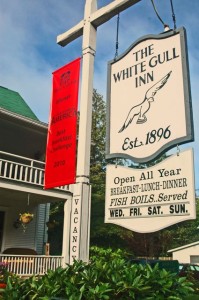
Encouraged by Good Morning America’s claims that the White Gull Inn Restaurant in Fish Creek serves one of the best breakfasts in all of America, I tried a bit of everything on the menu: omelettes, corned beef hash, buttermilk pancakes, Swedish limpa bread toast and cherry-studded coffee cake included. Yes, I know I’m taking a chance on hell for the gluttony sin, but who cares in the quest to find the best-breakfast-title claimer, which turned out to be a divine Door County Cherry Stuffed French Toast.
This awesomely rich, but totally worth-the-calories French toast is loaded with cream cheese and local Montmorency cherries. Andy Coulson, White Gull Inn’s innkeeper, gave me the following recipe. I didn’t retest it for you (was afraid I might eat all six servings), but if the recipe replicates what was served, and I am sure it will, you are in for a bit of cherry heaven.
DOOR COUNTY CHERRY-STUFFED FRENCH TOAST
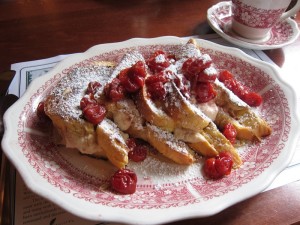
Yield: 6 servings
1 loaf unsliced egg bread
2 (8-ounce) packages cream cheese, room temperature
2 cups frozen tart Montmorency cherries, thawed and divided (see note)
3 eggs
1/2 cup milk
Oil for grilling
Cinnamon
Powdered sugar
Butter
Maple syrup
Trim ends from loaf and cut bread into six 1.5-inch thick slices. Make a cut three-quarters down the middle of each slice. (Bread will appear to have two separate slices, but will be joined together at bottom.) Set aside.
In a small bowl, mix together cream cheese and one cup of the cherries. Spread approximately 1/6 of the mixture into the pocket of each slice of bread. Gently press slices together, evenly distributing filling.
In a separate bowl, beat eggs and milk together. Dip stuffed slices into egg mixture and coat all sides. Immediately place on a lightly oiled griddle (or in a frying pan) and sprinkle with cinnamon. Cook over medium heat until golden brown, turning to cook second side.
Remove cooked slices from griddle and place on a cutting board. Gently halve each piece diagonally, forming two triangles. Arrange two triangles on individual plates. Sprinkle with powdered sugar and remaining cherries.
Serve with butter and maple syrup.
Note: The White Gull Inn uses frozen Montmorency cherries, which they buy from Seaquist Orchards, the largest growers and processors of cherries in Wisconsin. Seaquist’s owner Kristin Seaquist said if frozen cherries are not available, to use fresh or canned. (Canned Montmorency cherries are available by mail order: click here).


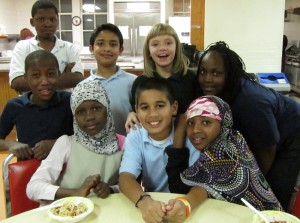 If they can do it, you can do it.
If they can do it, you can do it.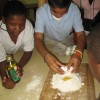
 important.) Pick up a fork and hold it with the tines parallel with the flat surface, not pointing down. Keeping the fork flat (parallel to the surface), begin making circles inside the mound and gently whip the eggs and oil until white and yolk are blended. (You could support the side of the flour mound with your free hand to help keep the egg in the mound.) With the same flat circular motion, very slowly start bringing flour from the side of the mound into the egg mixture. Continue slowly and carefully incorporating flour from sides and bottom of mound into the eggs until you have a sticky dough. Then put the fork down and gently knead the dough with your hand, incorporating enough flour to make a soft, but not sticky dough. Gather dough into a ball. You will probably not have used all of the flour in the mound. Pass remaining flour through a strainer to remove all lumps (throw lumps away). Use strained flour for rolling dough.
important.) Pick up a fork and hold it with the tines parallel with the flat surface, not pointing down. Keeping the fork flat (parallel to the surface), begin making circles inside the mound and gently whip the eggs and oil until white and yolk are blended. (You could support the side of the flour mound with your free hand to help keep the egg in the mound.) With the same flat circular motion, very slowly start bringing flour from the side of the mound into the egg mixture. Continue slowly and carefully incorporating flour from sides and bottom of mound into the eggs until you have a sticky dough. Then put the fork down and gently knead the dough with your hand, incorporating enough flour to make a soft, but not sticky dough. Gather dough into a ball. You will probably not have used all of the flour in the mound. Pass remaining flour through a strainer to remove all lumps (throw lumps away). Use strained flour for rolling dough.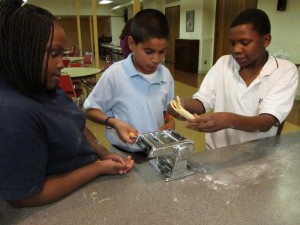 Press gently to flatten the dough rectangle. Lightly sprinkle dough rectangle with flour. Put one of the narrow ends of the folded rectangle into the machine and repeat the rolling, folding and flouring. Repeat about eight more times, or until dough is very smooth.
Press gently to flatten the dough rectangle. Lightly sprinkle dough rectangle with flour. Put one of the narrow ends of the folded rectangle into the machine and repeat the rolling, folding and flouring. Repeat about eight more times, or until dough is very smooth.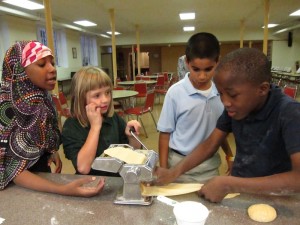 (The sheet of dough will get longer and longer as you roll and you may need some help handling it. I don’t know if a purist would ever do this, but beginners can cut the long sheet in sections to make handling a little easier. It is important to remember to never squeeze a long sheet of dough in your fist, but let it hang over your open hand or on the back of your hand to move it.) After the last rolling, gently pull the pasta to its full length and set on lightly floured dishtowels to “dry” for about 10 minutes before cutting.
(The sheet of dough will get longer and longer as you roll and you may need some help handling it. I don’t know if a purist would ever do this, but beginners can cut the long sheet in sections to make handling a little easier. It is important to remember to never squeeze a long sheet of dough in your fist, but let it hang over your open hand or on the back of your hand to move it.) After the last rolling, gently pull the pasta to its full length and set on lightly floured dishtowels to “dry” for about 10 minutes before cutting.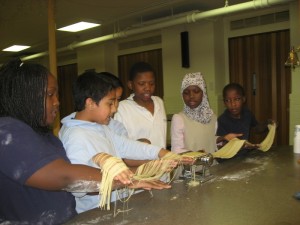
 Put a lot of water into a large pot. Set the pot over high heat. Bring the water to a full boil. Put the pasta in the boiling water and cook until tender, 15 to 30 seconds for very thin fresh pasta and up to a minute for thicker. Drain pasta in a colander. The pasta is ready to add sauce and eat.
Put a lot of water into a large pot. Set the pot over high heat. Bring the water to a full boil. Put the pasta in the boiling water and cook until tender, 15 to 30 seconds for very thin fresh pasta and up to a minute for thicker. Drain pasta in a colander. The pasta is ready to add sauce and eat.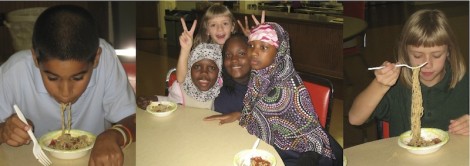
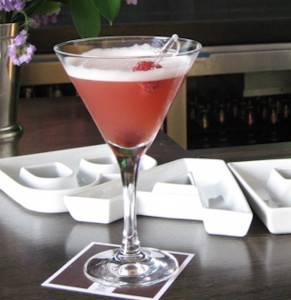
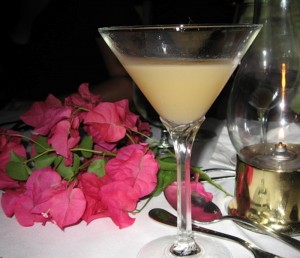
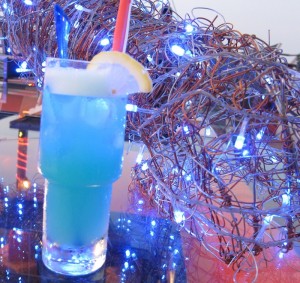

 by crushing the rock-like crackers and soaking the crumbs in liquids at hand (lime juice, canned milk, an egg or two). Imagine the surprise when the acid in the lime “cooked” the proteins in the egg and milk, forming custard without the need for heat. What could be better than a delicious concoction, easily made from available ingredients, requiring no heat to cook.
by crushing the rock-like crackers and soaking the crumbs in liquids at hand (lime juice, canned milk, an egg or two). Imagine the surprise when the acid in the lime “cooked” the proteins in the egg and milk, forming custard without the need for heat. What could be better than a delicious concoction, easily made from available ingredients, requiring no heat to cook. sometimes replaced the graham crumbs. The original pies probably went topless, but at some point a thrifty cook wanting to use egg whites left over from the yolks in the custard, added a layer of meringue. Whipped cream joined the topping choices when fresh milk came to the Keys with the railroad in 1912. The greatest change however, and a shocking travesty to purists, occurred when folks began making Key lime pie, without Key limes.
sometimes replaced the graham crumbs. The original pies probably went topless, but at some point a thrifty cook wanting to use egg whites left over from the yolks in the custard, added a layer of meringue. Whipped cream joined the topping choices when fresh milk came to the Keys with the railroad in 1912. The greatest change however, and a shocking travesty to purists, occurred when folks began making Key lime pie, without Key limes.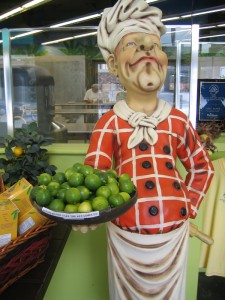 with thorny branches. When a hurricane devastated the Key’s lime crop in 1926, most growers replaced their plantations with Persian limes, which are easier to pick and transport. The larger, deep green Persian limes are found in most supermarkets today.
with thorny branches. When a hurricane devastated the Key’s lime crop in 1926, most growers replaced their plantations with Persian limes, which are easier to pick and transport. The larger, deep green Persian limes are found in most supermarkets today.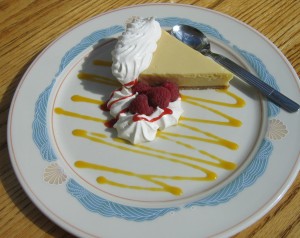
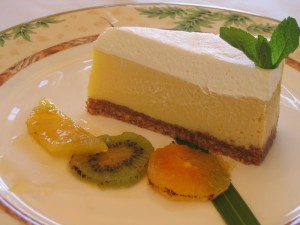

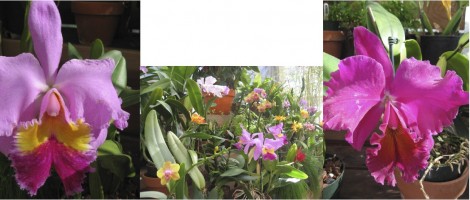
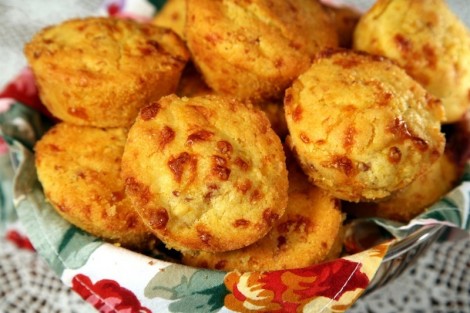


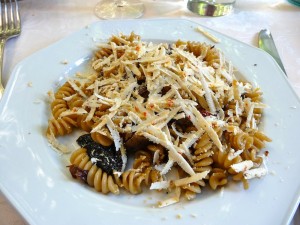
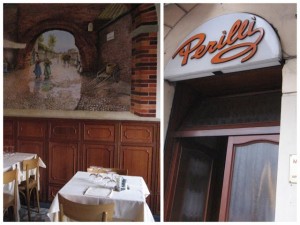
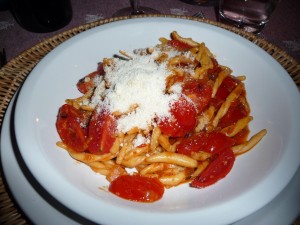

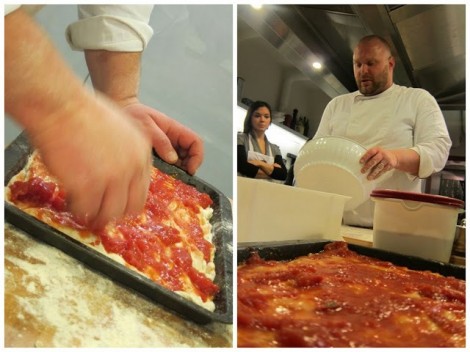


 For more on Elizabeth visit her blog,
For more on Elizabeth visit her blog, 




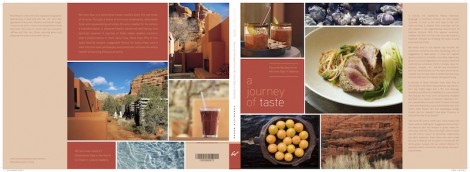




 Trailblazers will need a car, some cash, an appetite, napkins and the ability to remember how to pronounce boudin (which is “boudan” or “boodeh” delivered with a Cajun accent).
Trailblazers will need a car, some cash, an appetite, napkins and the ability to remember how to pronounce boudin (which is “boudan” or “boodeh” delivered with a Cajun accent).






















































